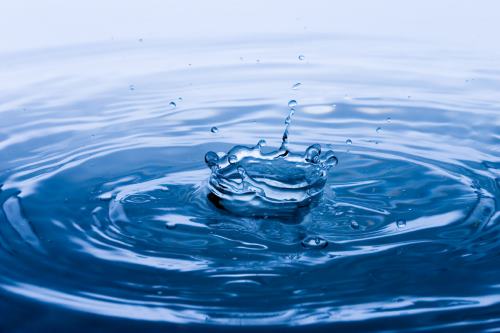Water is THE most important resource for survival. Period. We take it for granted that we will always have a supply of water to drink at our disposal and we barely give it a second thought to take precautions and perhaps store some of it for a SHTF scenario…
I often hear the following questions: “How long will water last if I store it?” “How long until water goes bad?”
My response to that is…
Water is water, is water. Water does not go bad in and of itself.
It is the contamination that gets in it that can make it go bad. How long you can store it depends on if you are letting contaminants get in, or ‘grow’ in it.
The key to successfully storing drinking water for long-term storage is…
1. Starting with good pure clean water
2. A good clean safe sealed container
3. A good storage location
Usually the best source is water from your tap at home, which already has been treated with enough chlorine to destroy harmful pathogens (typically 1-ppm chlorine). You might consider increasing this to 4-ppm for long term storage to be assured of a maximum safe level (according to EPA) to eliminate and prohibit growth of pathogens. Making Drinking Water Safe With Bleach
A very good way to store your water is in BPA-free plastic containers that have been manufactured specifically for water storage. These containers are often colored blue and will be labeled as safe for drinking water. You may also use any food-grade storage container, or you may choose to use your own two-liter plastic soft drink bottles. In all cases, be sure to thoroughly clean the storage container first.
Store your long-term drinking water storage containers in a cool place so as to avoid heat which will promote growth of algae, etc. Keep the containers in a dark environment because sunlight will deteriorate the chlorine level.
How much drinking water should I store?
FEMA says you should have at least a three-day supply of water and you should  store at least one gallon of water per person per day. A normally active person needs at least one-half gallon of water daily just for drinking.
store at least one gallon of water per person per day. A normally active person needs at least one-half gallon of water daily just for drinking.
I say that you should assess your situation, your surroundings (do you have access to other water sources than tap water?), the number of people you’re storing for, your risk tolerance threshold, your risk assessment of what might affect you, and decide for yourself how much you would like to store.
50 gallons would be just about enough for 2 people for a month. And that doesn’t count all the ‘gray water’ that you normally consume (washing, sanitation, etc..).
How long will the long-term water storage last?
There are a multitude of opinions, but I’m sticking to this… “Water is water, is water.” If you start with a pure clean source treated with a safe level of chlorine and store it in a clean sealed container in a cool place out of sunlight, it will be drinkable for “a very long time”. If it’s clean and pure to begin with, and you don’t allow contamination to enter, it will be safe to drink. The taste will be ‘flat’ after awhile, but that’s not critical. For maintenance, I would dump it and replace it once every year to be assured.
Source: modernsurvivalblog.com
Other useful resources:
Survive The End Days (Biggest Cover Up Of Our President)
Survival MD (Best Post SHTF Medical Survival Guide Ever)
Blackout USA (EMP survival and preparedness guide)
Bullet Proof Home (A Prepper’s Guide in Safeguarding a Home )
Backyard Innovator (All Year Round Source Of Fresh Meat,Vegetables And Clean Drinking Water)
Conquering the coming collapse (Financial advice and preparedness )
Liberty Generator (Easy DIY to build your own off-grid free energy device)
Backyard Liberty (Easy and cheap DIY Aquaponic system to grow your organic and living food bank)
Family Self Defense (Best Self Defense Strategies For You And Your Family)
Sold Out After Crisis (Best 37 Items To Hoard For A Long Term Crisis)

